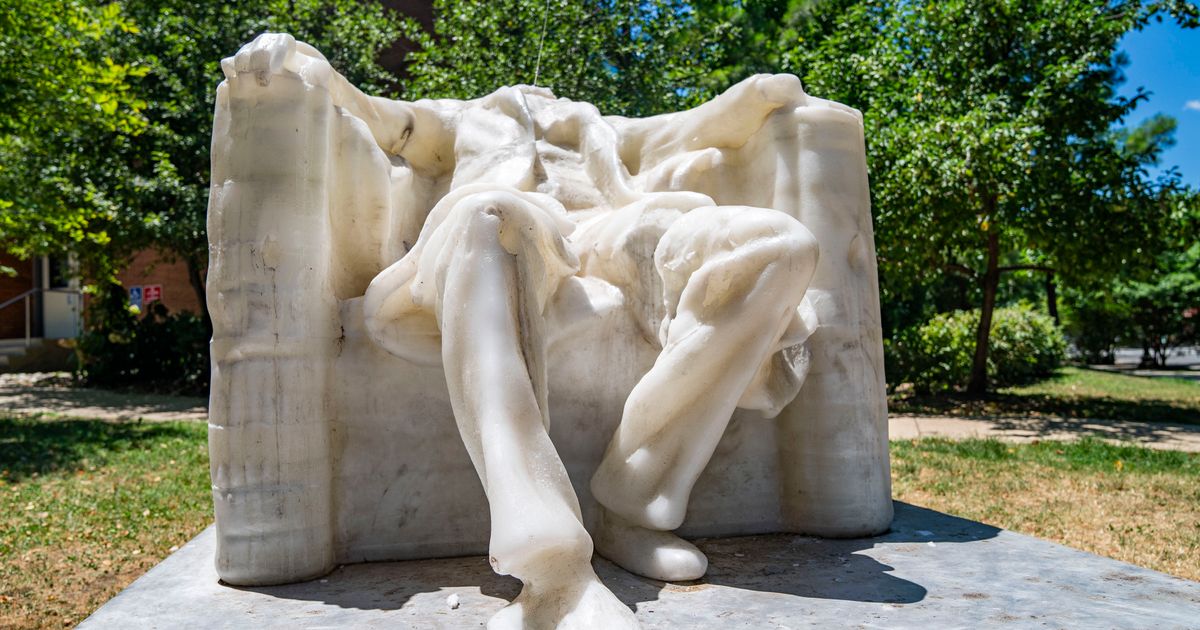[/gpt3]
Honest Abe was no match for a D.C. heat wave.
A six-foot-tall wax replica of the 16th president, created by artist Sandy Williams IV, was installed in February on in Northwest Washington, the Washington Post reports.
Although Williams told New York Magazine that the public art piece was always meant to melt, it was installed under shady trees so it could survive the summer, per the Post.
But thanks to the temperature topping 100 degrees over the weekend, Lincoln’s head got a little too gooey for comfort. So it was removed and stored for safe keeping, with plans to reattach it on Tuesday, the Post reported.
The Washington Post via Getty Images
This is the second Lincoln candle Williams has crafted. The first wax replica had 100 wicks — which were meant to be lit, just not all at once, Williams told New York Magazine. It was installed at the same location in September 2023, but was melted by some wily local residents before its unveiling.
“People found the sculpture without any sort of prompt,” Williams told New York Magazine. “They just noticed it had wicks, then they lit all of the wicks and left it melting for days. So when we came back to have the unveiling, it was already half melted and headless.”
Even before Wax Lincoln No. 2′s head melted off, the statue began to droop backwards, making it appear like the former president was exhausted and slouching back in his seat.
Journalist Kirk A. Bado snapped a shot of Abe in this position and posted it on X, formerly Twitter, on Sunday. People quickly started making jokes — and some of them were pretty dirty.
Once the head was removed, people had other cracks to make.
Williams said that the piece was initially intended to draw attention to the Civil War era and its aftermath.
“For this work, we chose Garrison Elementary School because it sits on top of Camp Barker, which was a Civil War-era freedmen’s community that we often don’t learn about,” Williams told New York Magazine. “I think we learned this history that Lincoln freed the slaves, but we aren’t taught what happened to the early freed communities, the injustices of that period of Reconstruction, and the concept of reparations.”
But the artist was also open to “wherever people take” their interpretations of the piece, because “that is what public artwork is about.”
“My methodology around the work is that I put love into making these projects and present them as a sort of gift to the community. I’m hands-off on the authorship of its form or its reading,” Williams said. “I thought one comment was like, ‘This is me after I get home from work’ or ‘This is me in the Zoom meeting that could have been an email.’ I think it’s funny the way an image can be so viral and have so many different meme interpretations.”
